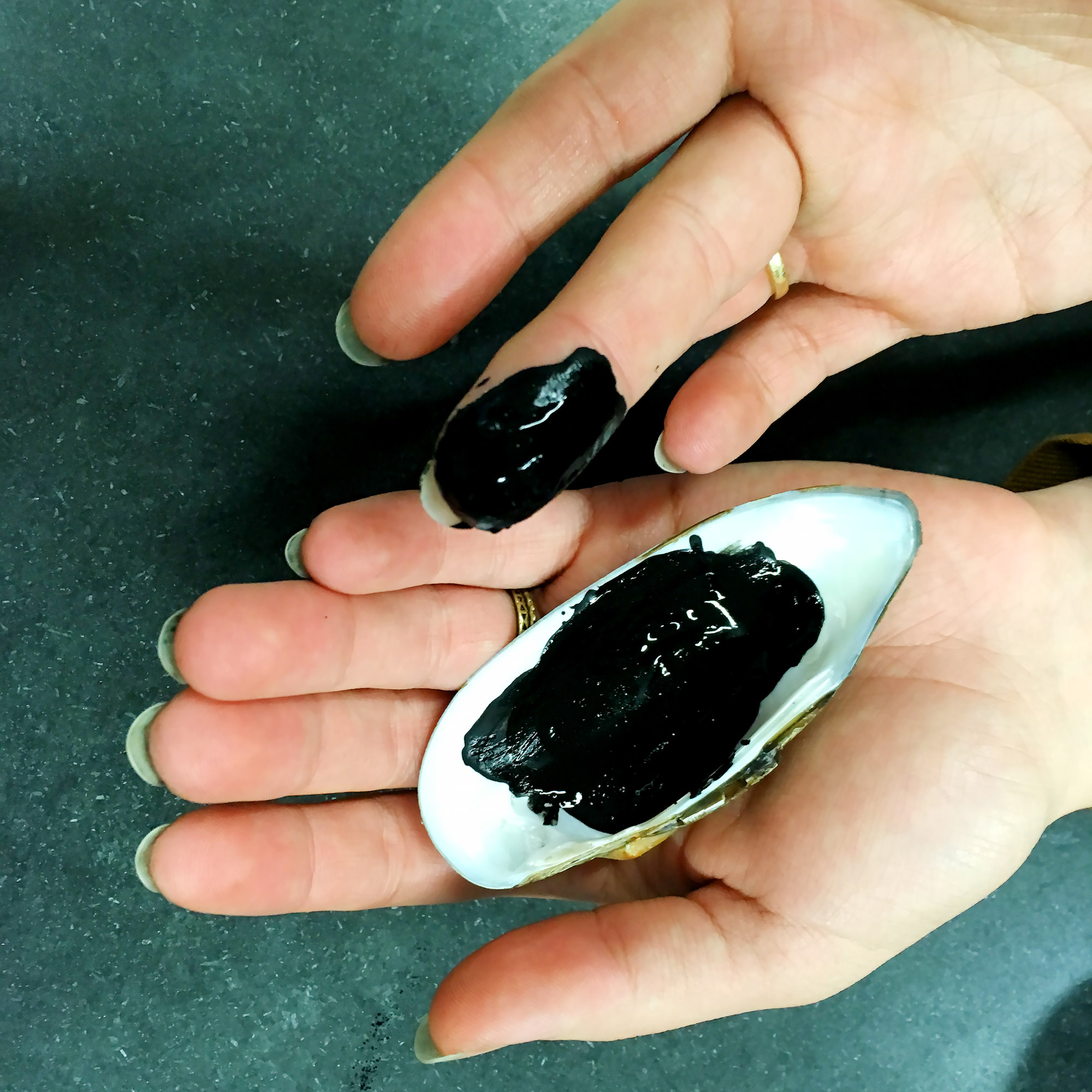“When you intend to worke with it [the pigment powder]. Take as much as conveniently will lye in a shell, of Mother of Pearle, neatly cleaned and burnished […] Put to this (as to all colors) a little Gum-Arabick the best and whitest; which you may have ready in powder, very fine, in a box (or else dissolved in water) and with a few drops of running water temper it with your finger to dissolve and mixe with your Color. Discretion and Practice will direct you”.[1]
In this quote Sanderson outlines the ancient method of preparing a watercolor for limning. Pigment powder is put into a freshwater shell of Unio pictorum, the painter’s mussel, and a small amount of binding medium is added carefully. By tempering, in other words by blending pigment and binder with a clean finger, the particle size of the pigment, viscosity and homogeneity of the paint can be controlled (Figure 59).

Adding more water or binding medium adjusts the viscosity of the paint. The well-prepared watercolor should neither powder off due to lacking binding medium or form cracks as a consequence of surplus binder. Freshwater shells were used for centuries because they are ideal paint containers. Shells are easy to find in rivers and lakes, they lie perfectly in the hand, provide for a whitish background, and, in contrast to salt-containing sea-water shells, do not react with pH-sensitive paint. The amount of paint that a shell can hold is ideal for an illuminator. Remaining paint is stored within the shell and can be used again by re-wetting. Sources advise to cover the shell to prevent contamination by dust. Larger amounts of paint were stored in horns, just as ink, and necessitated stirring before use (Figure 60).

[1] The use of gum Arabic powder is unusual, since the gum needs time to swell in water and therefore it would not result in a good water colour. More common is the addition of gum Arabic which is already dissolved in water. Sanderson. 1658. Graphice, the Use of the Pen and Pensil: p. 55. https://archive.org/details/graphiceuseofpen00sand.